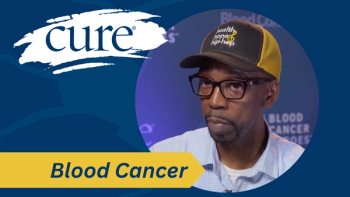
Clinical Trial Data Highlights Stark Socioeconomic Disparities in Survival Rates Among Children with AML
New findings show that the socioeconomic status of children with AML plays a significant and alarming roll in the rate of their overall survival after diagnosis.
Children with AML enrolled in Phase 3 clinical trials for acute myeloid leukemia (AML) from low-income neighborhoods were 2.4 times more likely to die during treatment than children from middle and high-income neighborhoods, according to research presented at the 2019 American Society of Hematology Annual meeting.
Previous research in this space has shown that racial disparities impact cancer survival, but this is the first study to demonstrate socioeconomic status, including income and educational status, as a key contributor to survival disparities in children with AML enrolled in clinical trials. Researchers concluded the origin of this disparity was not from chemotherapy, but that pediatric AML patients from low income and low education zip codes have lesser five-year overall survival (OS) compared to patients from middle income and higher educated zip codes.
“We expected there to be a difference, but the degree of difference is quite substantial,” said lead study author Lena E. Winestone, MD, of the UCSF Benioff Children’s Hospital in San Francisco in a press release at ASH. “The more people are cognizant about the disparities that exist, the better positioned we’ll be to ameliorate them.”
Sixty-eight percent of the children from middle/high-income areas survived five years after diagnosis, compared to 61% surviving from low-income areas and only 43% surviving from areas of poverty. Children from areas with a lower level of educational attainment were also shown to have lower rates of OS compared to those from areas with higher levels of educational attainment — 58% compared to 70%, respectively. Patients from these low-income areas were determined to have a statistically significant higher risk of early death and treatment-related mortality on therapy, as well as more deaths due to toxicities from the chemotherapy treatment.
Researchers at UCSF Benioff Children’s Hospital and the Children’s Hospital of Philadelphia looked at 1,467 children with AML enrolled in AAML0531 and AAML1031 phase 3 clinical trials from the Children’s Oncology Group to determine this data. Among the poverty, low income, and low education areas, a significantly higher proportion of children with AML enrolled in these trials were Black and Hispanic patients.
Median annual household income was categorized using US Census Data into three categories — Poverty: less than $24,250 (below the federal poverty line); Low: $24,250-56,516; Middle/High greater than $56,516. Researchers also used US census data to determine educational levels in a patient’s neighborhood.
Accounting for other factors that play a significant role in survival, such as insurance type, race, and known biologic risk factors, researchers found that these socioeconomic predictors of OS were still significant. At a press briefing at ASH discussing the findings of the study, Winestone highlighted that racial disparities among Black and Hispanic patients in the same income and education levels persisted when socioeconomic status was taken into account. This suggested to researchers that minority children face a significantly higher risk of death during AML treatment than white children living in the same socioeconomic circumstances.
The researchers did not conclude the reasons behind this increased risk of death for patients with a lower socioeconomic status but noted that toxic stress in this group may play a part in impacting responses and recovery to treatment. Further research is needed to determine the reasons behind this, but they believe the findings of this study can show other researchers that additional socioeconomic data should be collected at the time of enrollment so future research can rely on more individual data.
“This data certainly highlights a stark disparity, but requires more data, particularly related to individual socioeconomic status, to determine how to address these disparities,” Winestone explained. “If we could gather that information, it would allow us to dig deeper into the question of how someone’s circumstances outside of the clinical aspects of their disease impact their health outcomes.”




